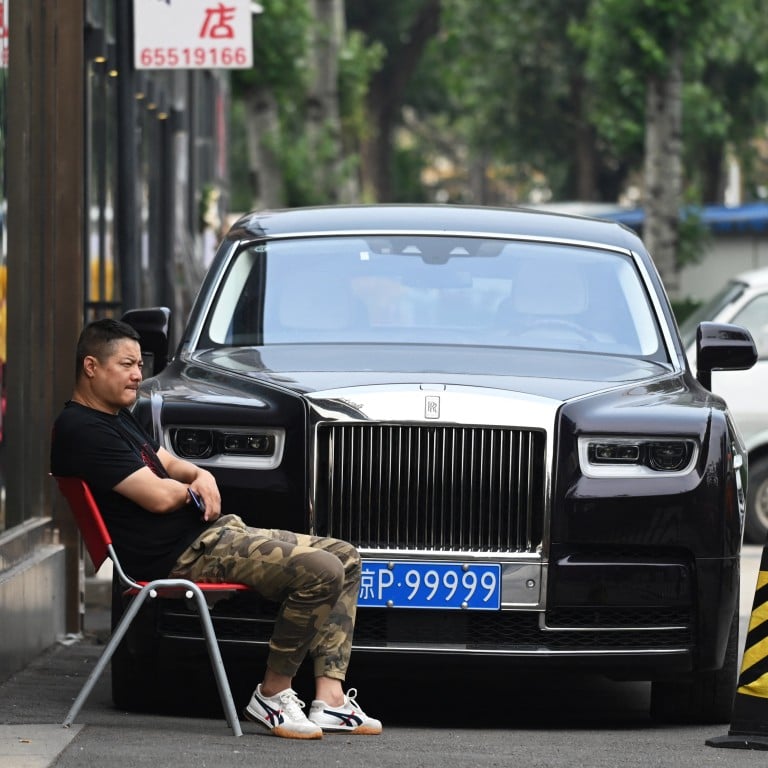
Billionaire population of Hong Kong, mainland China expands as global ‘great wealth transfer’ sees more riches inherited than earned: UBS
- A ‘great wealth transfer’ is under way, with billionaires accumulating more riches through inheritance than through entrepreneurship for the first time, says UBS
- Billionaires in Asia-Pacific are ‘increasingly seeking bespoke succession planning in order to reach consensus between generations on family legacies.’
A total of HK$1.18 trillion (US$150.8 billion) was inherited by 53 heirs worldwide in the 12 months to April, exceeding the HK$1.1 trillion raked in by 84 new self-made billionaires, according to the ninth edition of the Swiss bank’s Billionaire Ambitions report.
“It is exciting to see that APAC minted the most new billionaires during the period among all regions, with a total of 85 new billionaires from mainland China and Hong Kong in particular,” said Amy Lo, chairman of UBS Global Wealth Management Asia.
In mainland China and Hong Kong, the number of billionaires grew 11.3 per cent and 13.3 respectively. Almost all those in mainland China – 98 per cent – are self-made.
The billionaires of Indonesia, the Philippines and Singapore enjoyed the most substantial growth in their fortunes, with their wealth increasing by almost a third.
Lo said wealth managers will need to place greater importance on finding agreement between generations when it comes to passing on the family nest egg.
“The great wealth transfer among billionaires and wealthy families has started to show great momentum,” she said.
It was the first time in the nine-year lifespan of the UBS survey that billionaires had inherited more wealth than they had generated through entrepreneurship. That is a theme that is likely to stick over the next 20 years, said Benjamin Cavalli, head of strategic clients at UBS Global Wealth Management.
More than 1,000 billionaires will pass an estimated US$5.2 trillion to their children in the next 20 to 30 years, UBS predicts.
A new cohort of multigenerational families is taking shape, in which each generation has their own views on their legacy and ambitions.
As the ultra rich inherit their parents’ businesses, heirs are focusing more on current major economic opportunities and challenges, such as innovative technologies, the clean-energy transition and impact investing.
First-generation billionaires are aware of this, with 58 per cent claiming their greatest challenge is to pass on the necessary values, education, and experience for their heirs to take over.
While most first-generation billionaires ranked a potential US recession as their primary concern, closely followed by geopolitical tensions, their heirs said they were most concerned about inflationary pressures and the availability and price of raw materials.
All generations agreed on the opportunities and risks of generative artificial intelligence, with 65 per cent viewing AI as offering one of the greatest commercial opportunities to their operating business over the next 12 months.
The wealth of billionaires across the globe has made a partial recovery since the Covid-19 pandemic, driven by organic business growth and lifted in part by Europe’s consumer and retail billionaires, after falling by almost a fifth in the previous 12 months.
Worldwide, the number of billionaires rose by 7 per cent in the year to April, from 2,376 to 2,544. Their combined wealth rebounded by 9 per cent, from US$11 trillion to US$12 trillion.
When it came to asset allocation, the Asia-Pacific’s billionaires had a domestic bias, with 50 per cent viewing their home region as the greatest opportunity for returns over the next 12 months.
Forty-four per cent of them plan to increase their exposure to developed market bonds in the next year, closely followed by cash as they seeking a potential haven from geopolitical tensions.


